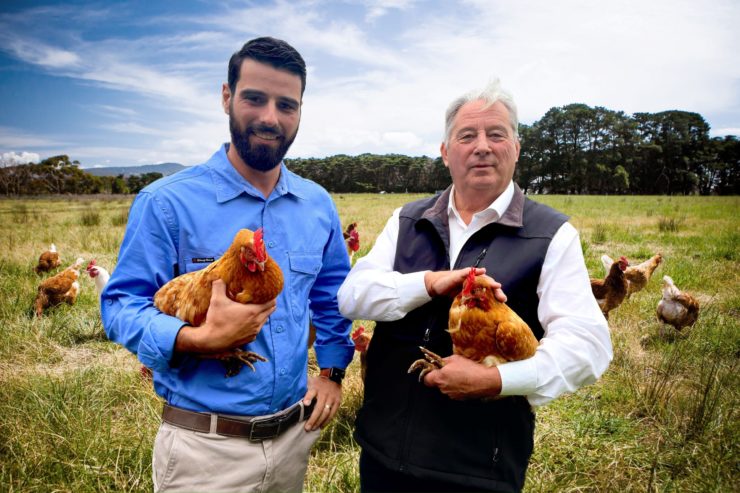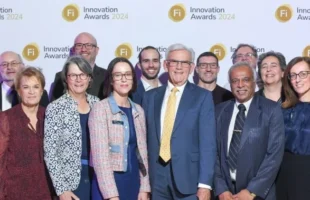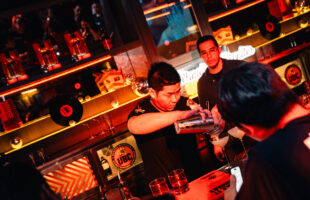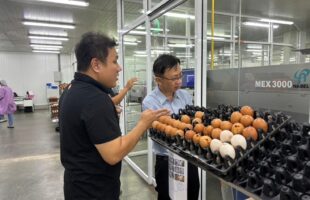
Courtesy of Food Recycle
A food technology company is introducing a new, scientifically validated process across Asia to convert food waste into rich feed for poultry, pigs, and aquaculture, enhancing profitability and reducing carbon dioxide emissions in the process.
As Asia returns to business as usual in 2023, it’s worth casting a glance back. We leave behind not just 2022 but also waste – and plenty of it. A study by Alcimed showed that 50 percent of global food waste comes from Asia.
The numbers are indeed daunting. The food waste produced in China alone could feed 100 million people. “Food waste rotting in landfill actually emits nearly six times the amount of greenhouse gases as the global aviation industry,” says Dr Steve Lapidge, CEO at Fight Food Waste.
In another study, annual household food waste produced in selected countries worldwide as of 2020, it was found that China and India produce more household food waste than any other country worldwide at an estimated 92 million and 69 million metric tons every year, respectively. The study notes that this is unsurprising, considering both countries have by far the largest populations globally.
A company originating in Australia and taking its technology through Asia and globally has developed novel technology to address this issue. “In devising a successful environmental solution to food waste, we acknowledge it also has to make good business sense,” says Norm Boyle, CEO of Food Recycle.
The company’s technology can take food waste from different sources and convert it into food for poultry, pigs, and aquaculture. The environmental impact is significant and tangible. For example, feed accounts for about 35 percent of the carbon footprint of 1 kg of chicken meat delivered to market and 76 percent of the carbon footprint of eggs.
While there is much debate and discussion around CO2 and its impact on global warming, the adverse effects of methane should be acknowledged. Around 30 percent of human food produced goes to waste and when that food goes to landfill it produces methane – a gas that is 20 to 30 times worse than CO2 at trapping heat.
“Food waste rotting in landfill actually emits nearly six times the amount of greenhouse gases as the global aviation industry,” says Dr Lapidge. “If we are going to do something about climate change, we really need to be looking strongly at food waste.”
A report, “Carbon dioxide emissions from energy worldwide from 1965 to 2021, by region,” found that “the Asia-Pacific region produced 17.74 billion metric tons of carbon dioxide emissions in 2021. This was more than the combined total emissions of all other regions that year. China alone accounted for nearly 60 percent of Asia-Pacific CO₂ emissions, and 31 percent of the global total.”
At the GOP26 held in Glasgow in 2021, eight out of the 10 Southeast Asian governments set targets to achieve net-zero carbon emissions by 2050.
Food Recycle has developed a patented process to efficiently process food waste from various sources such as restaurants, abattoirs, farms, and processors. Each food waste stream is processed individually, analysed, and stored separately as ingredients. “We then measure the nutritional and amino acid profile of each ingredient and then mix them together to make complete feeds,” says Boyle.
Two tonnes of food waste can be converted into one tonne of complete food suitable for poultry, pigs, and aquaculture. Apart from preventing methane generation, Food Recycle’s processing of food waste also eliminates every known biosecurity risk at no additional cost.
A series of rigorous trials conducted by CSIRO, Western Sydney University (WSU), and the University of New England (UNE) has demonstrated the viability of Food Recycle’s process.
Successful trials
One of the studies was conducted under the guidance of Dr Amy Moss, a postdoctoral research fellow at the School of Environmental and Rural Science, UNE. Dr Moss focuses on poultry nutrition and researches ways to promote efficient chicken-meat production.
Dr Moss and her team collaborated with Poultry Hub and Food Recycle to conduct a 40-week feed trial on layer hens using a food waste diet using feed provided by Food Recycle. Egg quality and hen health were measured throughout the trial and then the results were compared. The study demonstrated the advantages of food waste-based feed for laying hens.
Performance was improved with food waste-based diets, and egg production and quality were largely unchanged.
Another important food source that will benefit from food waste recycling is aquaculture. Cost-effective aquaculture food production will benefit the growth of this sector. Food Recycle has tapped into one of the world’s largest multidisciplinary science and research organisations, CSIRO.
Over six weeks, CSIRO Scientist Dr Ha Truong conducted a feed trial on barramundi using a food waste diet with the feed provided by Food Recycle.
“Significant growth improvements were observed when food waste ingredients were incorporated in diets at 67 percent, partially replacing traditional ingredients,” says Dr Ha. Interestingly, the high food waste diet increased weight gain of the barramundi by 35 percent and intake by 13 percent compared to the control while also achieving a food conversion ratio of less than 1, indicating that diet conversion into fish growth was highly efficient.
Technology-led innovations like the one from Food Recycle are key to meeting environmental targets. “We are working to convert food waste from a problem into a product and have successfully demonstrated this,” says Boyle.
About Food Recycle
Food Recycle is an Australian technology start-up that was founded to tackle the global problem of food waste. The company has a patented and patent-pending technology to convert any commercial food waste into high-performance animal feeds. Located in NSW, Australia, the company has worked with some of the best scientists in the country to develop and validate the technology.
Since its inception, the company has heavily focused on Research and Development. With the technology being implemented in Australia and New Zealand, the company focuses on licensing opportunities throughout Asia and in the international market.









